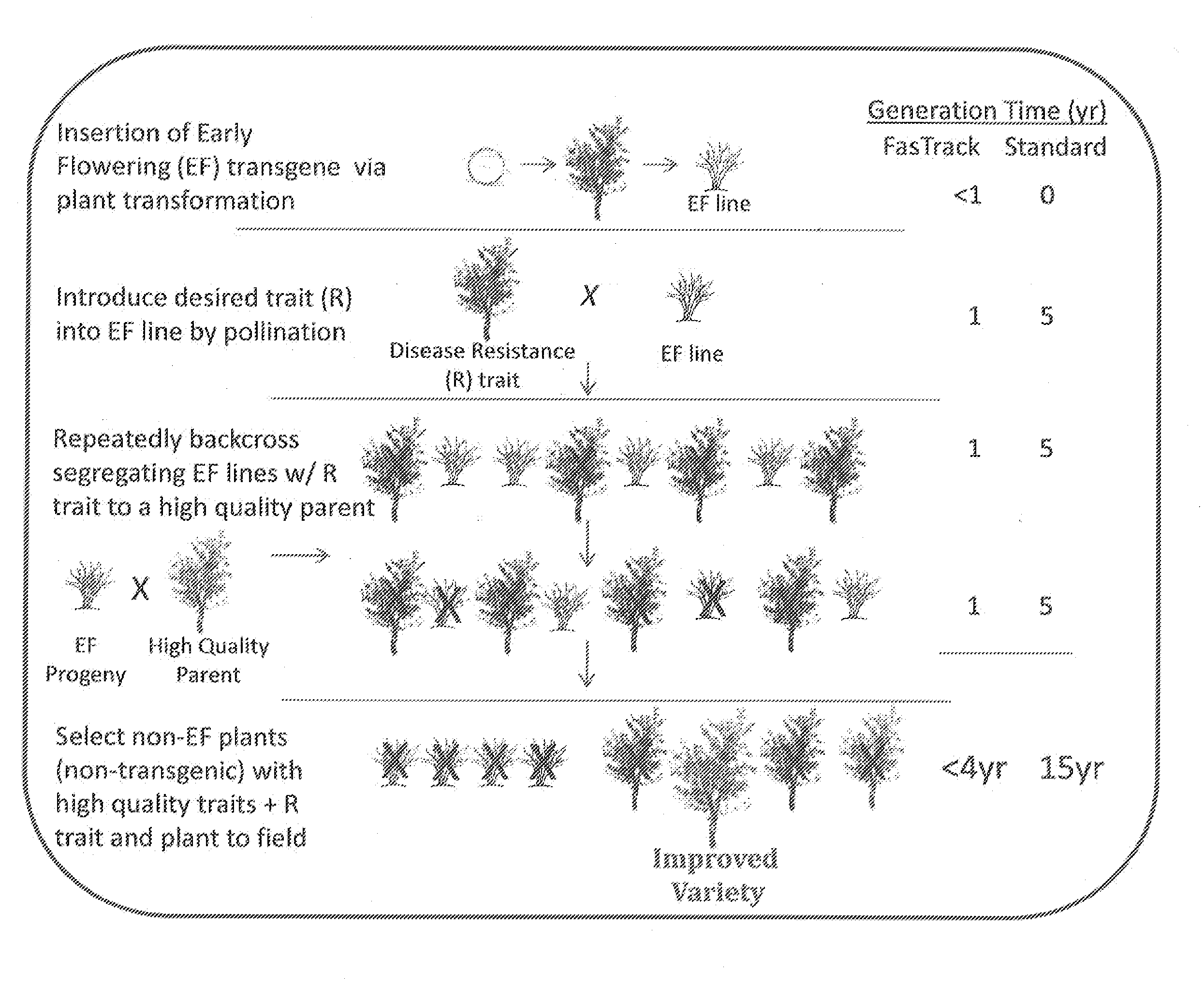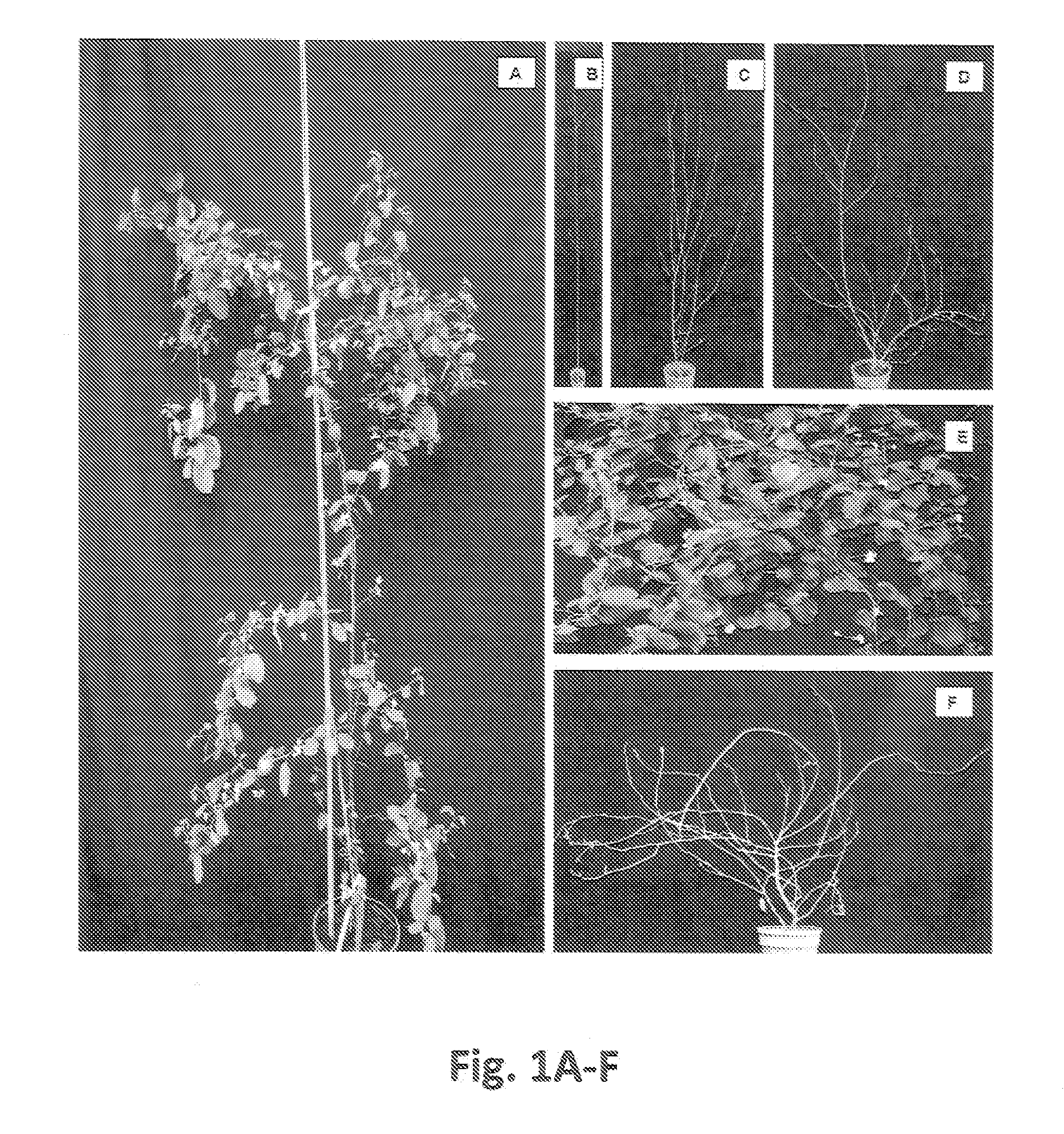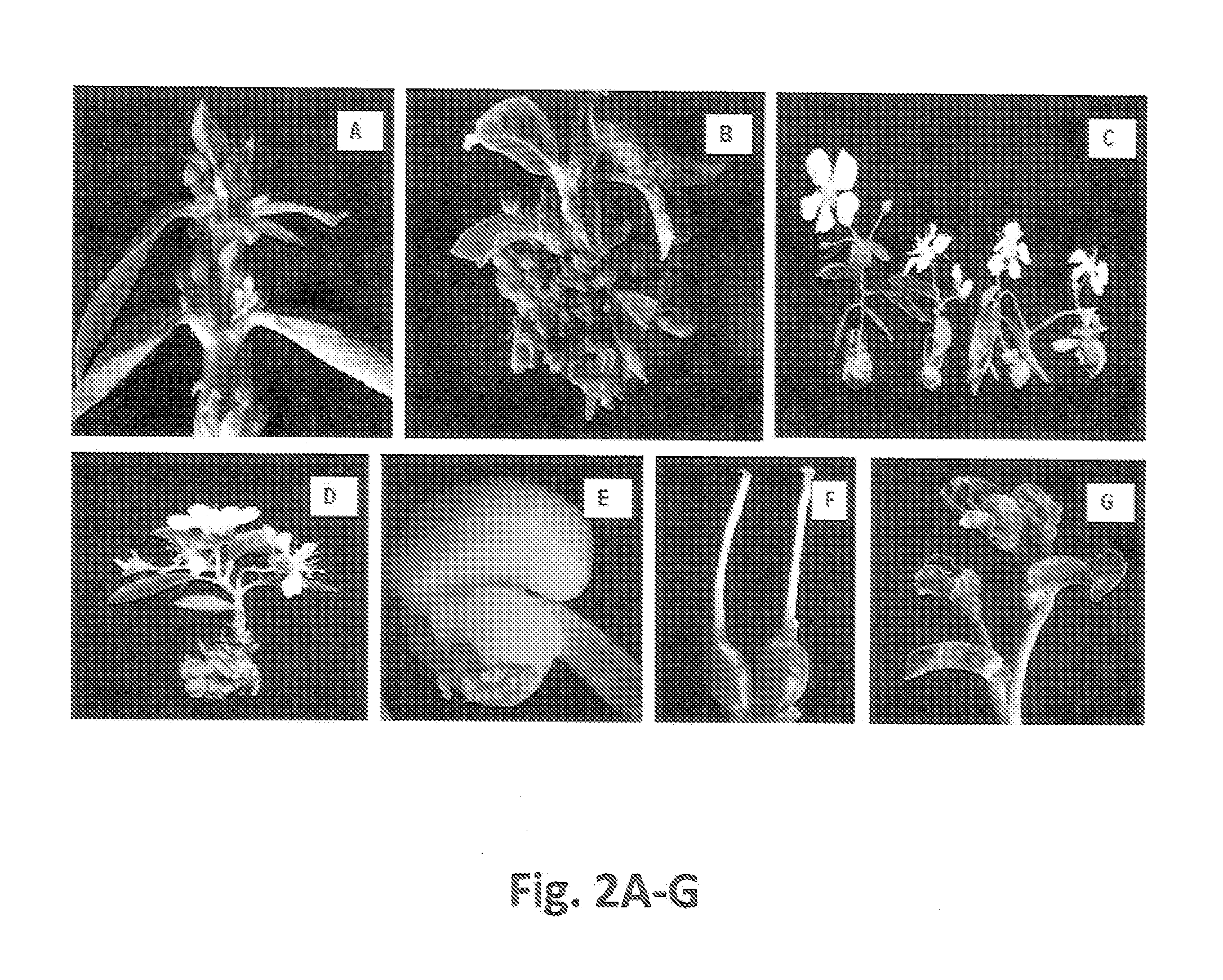Development of Very Early Flowering and Normal Fruiting Plum With Fertile Seeds
a technology of plums and seeds, applied in the field of development of transgenic plum genotypes, can solve the problems of large land area with significant field cost, yearly limitation of flowering and fruiting related to fruiting, product surplus, etc., and achieve the effect of reducing the long juvenile pre-flowering period
- Summary
- Abstract
- Description
- Claims
- Application Information
AI Technical Summary
Benefits of technology
Problems solved by technology
Method used
Image
Examples
example 1
Transformation
[0059]The plasmid pK2GW7 containing the Cauliflower Mosaic Virus 35S (CaMV 35S) promoter, and nptII and PtFT1 genes (Nilsson et al., supra) were transformed into the Agrobacterium tumefaciens strain GV3101. Hypocotyl sections excised from surface-sterilized mature seed embryos of plum cultivar ‘BlueByrd’ were transformed with A. tumefaciens strain GV3101 containing the 35S::PtFT1 gene (Bohlenius et al., supra). The transformed hypocotyl sections were cultured in vitro and transgenic plants were regenerated and rooted as described in Petri et al. (2008. Mol. Breeding 22:581-591). The rooted plantlets were acclimated in the growth chamber (20° C.; light intensity 70 μmol photons m2s−1, 16 h light / 8 hr dark photoperiod) for 2-3 weeks and planted in 6 or 9 inch pots and grown in a temperature controlled (27° C.) glasshouse under sunlight during the months of December 2007 to November 2008 to evaluate flowering and fruit production.
example 2
Transgenic Plants: Vegetative and Flowering Characteristics
[0060]The presence of 35S::PtFT1 gene in plum was determined by PCR analyses of DNA extracted from leaves using the published primers (Bohlenius et al., supra). A total of 196 transgenic plum plants representing 56 transgenic clones were regenerated. Flowering was scored in vitro, in the growth chamber, and in the greenhouse. Since ‘BlueByrd’ plum is self incompatible, pollen from compatible plum cultivars ‘Stanley’ or Cacanska Lepotica’ was used to pollinate the transgenic plum flowers in the greenhouse. Fully ripe plum fruits were evaluated for size, color, brix, and stone and seed development. Viability of transgenic seed embryos was determined by culturing embryo shoot tips and hypocotyls sections following the tissue culture methods of Petri et al. (supra) without the use of antibiotic selection.
[0061]Extensive lateral shoot production was observed in all transgenic plants within 6 months of planting in the greenhouse (...
example 3
Transgenic Plants: Effects of Induced Dormancy
[0069]Three FT plum lines were clonally propagated and placed in environmental growth chambers with non-transgenic controls at either 21° C. or 29° C. for 8 weeks. Growth rate, node number, bud development or formation, bud break, and flower number were measured at 2 week intervals (FIG. 8). Data showed that growth rate, node number, and rates of bud break were similar in both temperatures but both node number and bud break were higher for FT lines relative to controls. In contrast, flowering was more prolific in FT plums at 21° C. while higher numbers of floral buds were set at 29° C. To confirm the temperature effect, after 8 weeks five plants were swapped from each chamber. Again flowering increased in plants shifted to 21° C. and was repressed at 29° C. Abnormal flowers only developed at 29° C. even in buds set at 21° C. suggesting that de-differentiation occurred post bud break.
[0070]FT plums grown in the greenhouse were insensitive...
PUM
| Property | Measurement | Unit |
|---|---|---|
| temperature | aaaaa | aaaaa |
| width | aaaaa | aaaaa |
| temperature | aaaaa | aaaaa |
Abstract
Description
Claims
Application Information
 Login to View More
Login to View More - R&D
- Intellectual Property
- Life Sciences
- Materials
- Tech Scout
- Unparalleled Data Quality
- Higher Quality Content
- 60% Fewer Hallucinations
Browse by: Latest US Patents, China's latest patents, Technical Efficacy Thesaurus, Application Domain, Technology Topic, Popular Technical Reports.
© 2025 PatSnap. All rights reserved.Legal|Privacy policy|Modern Slavery Act Transparency Statement|Sitemap|About US| Contact US: help@patsnap.com



